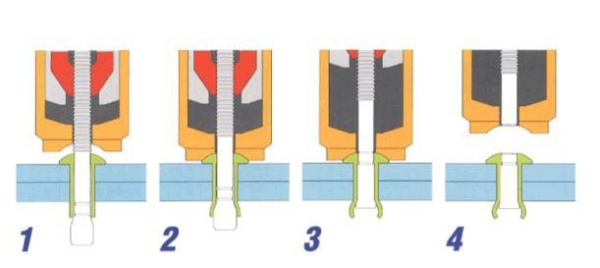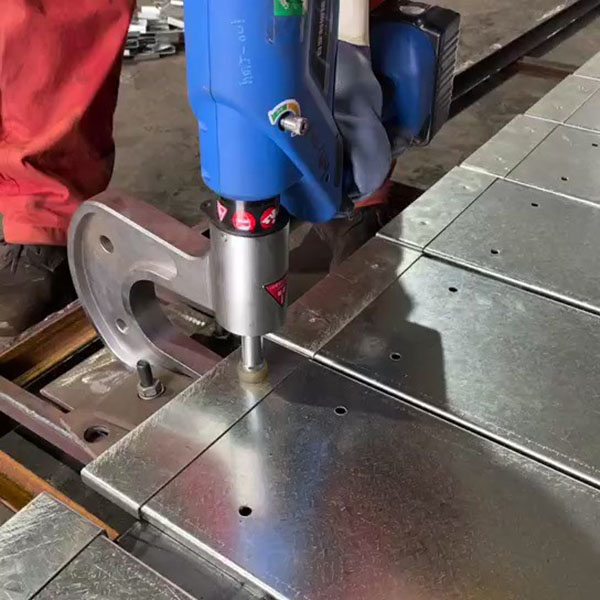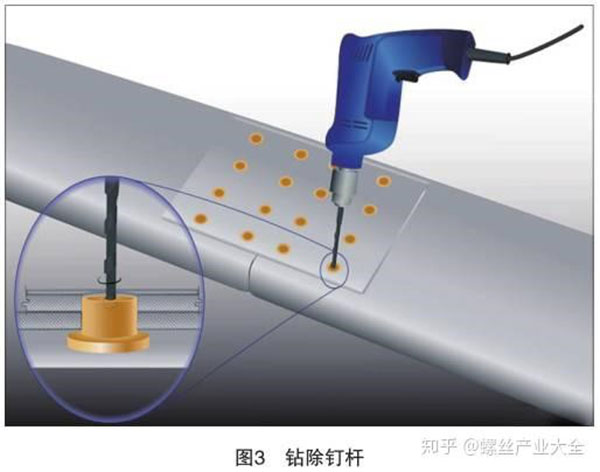The riveting process requires high precision, especially the control of deformation during the riveting process is the key to the riveting process.
The riveting process is similar to the free forging process, in fact, it is the process of forming a rivet head under the action of external forces, which is the process of using riveting pressure to reduce the height of the pin shaft and increase the diameter to form a rivet head.
Due to external forces, the rivet undergoes plastic deformation, causing the rivet rod to expand and thicken. This expansion exerts pressure on the hole, causing it to expand. The process of forming a rivet head has a significant impact on the riveting deformation and fatigue performance of the riveting structure after riveting is completed.
The metal flow trend in the rivet head riveting process was analyzed: if the upper and lower riveting dies were rigid bodies, the upper die applied riveting force F to the rivet head blank during the riveting process, and there was friction force f between the upper and lower dies and the rivet head blank contact surface, then the blank height would be shortened and the transverse thickening would be increased under the action of riveting Ram pressure and friction force, and the volume of the middle part of the blank would increase faster than the end of the blank in the process of forming the rivet head, This is the effect of friction, forming a waist drum shape.
 Therefore, if the transverse section of the billet is used to represent the flow direction of metal particles, it is the radiation flow of metal particles from the center of the cross-section to the surrounding areas. The law of minimum resistance can be applied to analyze the flow pattern of particles in metal plastic forming. In plastic forming, when there are several possible directions for metal particles to move, they move towards the direction of minimum resistance.
Therefore, if the transverse section of the billet is used to represent the flow direction of metal particles, it is the radiation flow of metal particles from the center of the cross-section to the surrounding areas. The law of minimum resistance can be applied to analyze the flow pattern of particles in metal plastic forming. In plastic forming, when there are several possible directions for metal particles to move, they move towards the direction of minimum resistance.
If the friction force of the upper die acting on the end face of the blank is f, because the friction resistance of the particles on the contact surface flowing to the Free surface is proportional to the distance between the particles and the Free surface, the shorter the distance from the free boundary, the smaller the resistance, and the metal particles must flow in this direction.
Post time: Jul-12-2023



